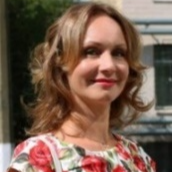
Liudmyla Tereikovska
Work place: Kyiv National University of Construction and Architecture, Kyiv, Ukraine
E-mail: tereikovskal@ukr.netb
Website: https://orcid.org/0000-0002-8830-0790
Research Interests: Models of Computation, Mathematics of Computing, Information Systems, Speech Recognition, Network Security, Pattern Recognition, Neural Networks, Computer systems and computational processes, Distance education
Biography
Liudmyla Tereikovska is Ph.D., Associate Professor of Kyiv National University of Construction and Architecture, Kyiv, Ukraine. She has currently published more than 110 publications. Her research interests are data mining, development of neural network systems, recognition of voice signals.
Author Articles
The Method of Semantic Image Segmentation Using Neural Networks
By Ihor Tereikovskyi Denys Chernyshev Liudmyla Tereikovska Oleksandr Korystin Oleh Tereikovskyi Zhengbing Hu
DOI: https://doi.org/10.5815/ijigsp.2022.06.01, Pub. Date: 8 Dec. 2022
Currently, the means of semantic segmentation of images, which are based on the use of neural networks, are increasingly being used in computer systems for various purposes. Despite significant progress in this industry, one of the most important unsolved problems is the task of adapting a neural network model to the conditions for selecting an object mask in an image. The features of such a task necessitate determining the type and parameters of convolutional neural networks underlying the encoder and decoder. As a result of the research, an appropriate method has been developed that allows adapting the neural network encoder and decoder to the following conditions of the segmentation problem: image size, number of color channels, acceptable minimum segmentation accuracy, acceptable maximum computational complexity of segmentation, the need to label segments, the need to select several segments, the need to select deformed , displaced and rotated objects, allowable maximum computational complexity of training a neural network model, allowable training time for a neural network model. The main stages of the method are related to the following procedures: determination of the list of image parameters to be registered; formation of training example parameters for the neural network model used for object selection; determination of the type of CNN encoder and decoder that are most effective under the conditions of the given task; formation of a representative educational sample; substantiation of the parameters that should be used to assess the accuracy of selection; calculation of the values of the design parameters of the CNN of the specified type for the encoder and decoder; assessment of the accuracy of selection and, if necessary, refinement of the architecture of the neural network model. The developed method was verified experimentally on examples of semantic segmentation of images containing objects such as a car. The obtained experimental results show that the application of the proposed method allows, avoiding complex long-term experiments, to build a NN that, with a sufficiently short training period, ensures the achievement of image segmentation accuracy of about 0.8, which corresponds to the best systems of similar purpose. It is shown that it is advisable to correlate the ways of further research with the development of approaches to the use of special modules such as ResNet, Inception and mechanisms of the Partial convolution type used in modern types of deep neural networks to increase their computational efficiency in the encoder and decoder.
[...] Read more.Procedure for Processing Biometric Parameters Based on Wavelet Transformations
By Zhengbing Hu Ihor Tereikovskyi Denys Chernyshev Liudmyla Tereikovska Oleh Tereikovskyi Dong Wang
DOI: https://doi.org/10.5815/ijmecs.2021.02.02, Pub. Date: 8 Apr. 2021
The problem of the article is related to the improvement of means of covert monitoring of the face and emotions of operators of information and control systems on the basis of biometric parameters that correlate with two-dimensional monochrome and color images. The difficulty in developing such tools has been shown to be largely due to the cleaning of images associated with biometric parameters from typical non-stationary interference caused by uneven lighting and foreign objects that interfere with video recording. The possibility of overcoming these difficulties by using wavelet transform technology, which is used to filter images by combining several identical, but differently noisy monochrome and color images, is substantiated. It is determined that the development of technology for the use of wavelet transforms is primarily associated with the choice of the type of basic wavelet, the parameters of which must be adapted to the conditions of use in a particular system of covert monitoring of personality and emotions. An approach to choosing the type of basic wavelet that is most effective in filtering images from non-stationary interference is proposed. The approach is based on a number of the proposed provisions and efficiency criteria that allow to ensure when choosing the type of basic wavelet taking into account the significant requirements of the task. A filtering procedure has been developed, which, due to the application of the specified video image filtering technology and the proposed approach to the choice of the basic wavelet type, allows to effectively clean the images associated with biometric parameters from typical non-stationary interference. The conducted experimental studies have shown the feasibility of using the developed procedure for filtering images of the face and iris of operators of information and control systems.
[...] Read more.Other Articles
Subscribe to receive issue release notifications and newsletters from MECS Press journals